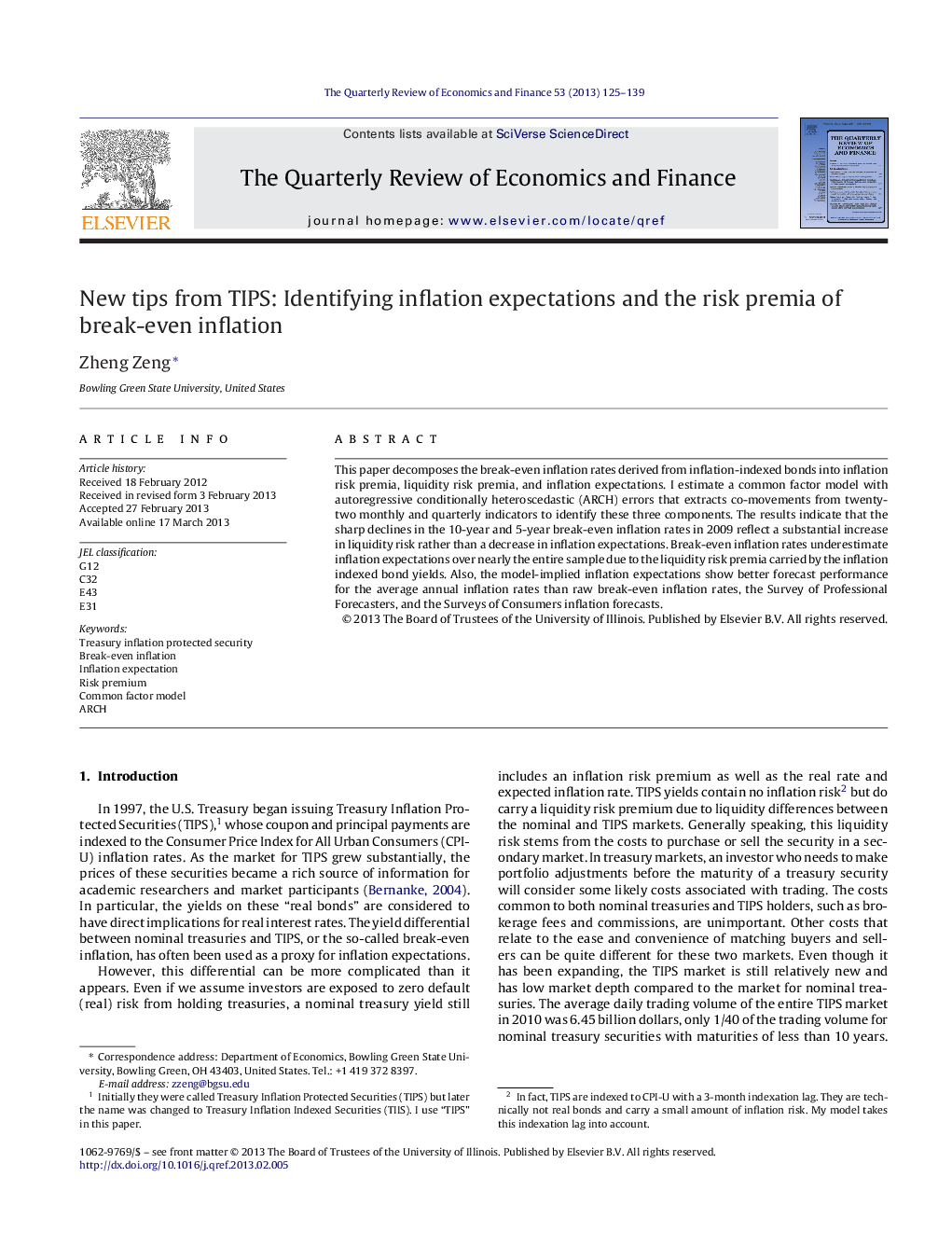| Article ID | Journal | Published Year | Pages | File Type |
|---|---|---|---|---|
| 983354 | The Quarterly Review of Economics and Finance | 2013 | 15 Pages |
•The 2006 housing bubble raised inflation risk but the following crisis raised liquidity risk.•Liquidity risk rises during economic busts and remains low during economic booms.•Break-even inflations overestimate expected inflation due to liquidity risk.•The model implied-inflation expectations have the stronger forecast performance than any proposed data.
This paper decomposes the break-even inflation rates derived from inflation-indexed bonds into inflation risk premia, liquidity risk premia, and inflation expectations. I estimate a common factor model with autoregressive conditionally heteroscedastic (ARCH) errors that extracts co-movements from twenty-two monthly and quarterly indicators to identify these three components. The results indicate that the sharp declines in the 10-year and 5-year break-even inflation rates in 2009 reflect a substantial increase in liquidity risk rather than a decrease in inflation expectations. Break-even inflation rates underestimate inflation expectations over nearly the entire sample due to the liquidity risk premia carried by the inflation indexed bond yields. Also, the model-implied inflation expectations show better forecast performance for the average annual inflation rates than raw break-even inflation rates, the Survey of Professional Forecasters, and the Surveys of Consumers inflation forecasts.
